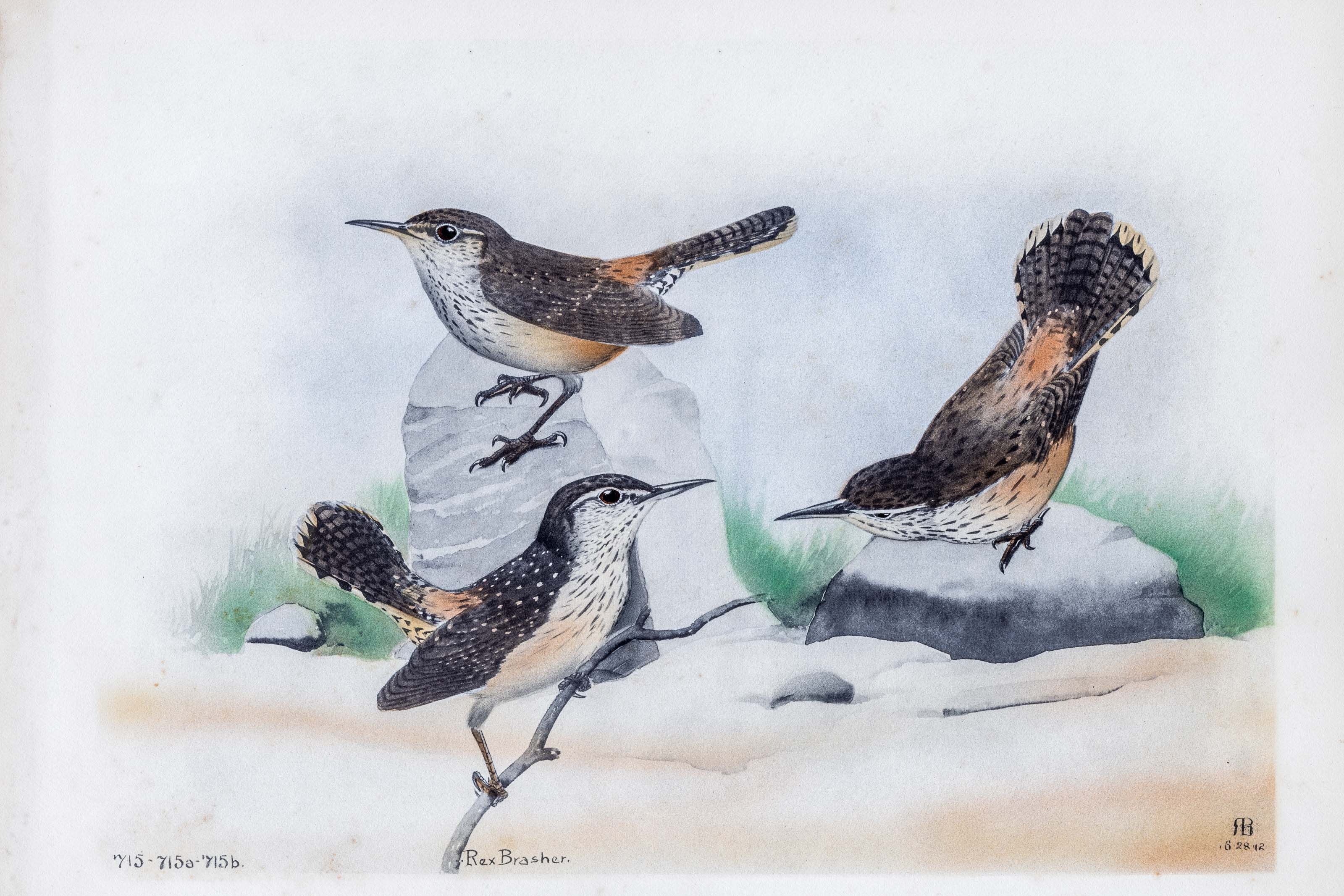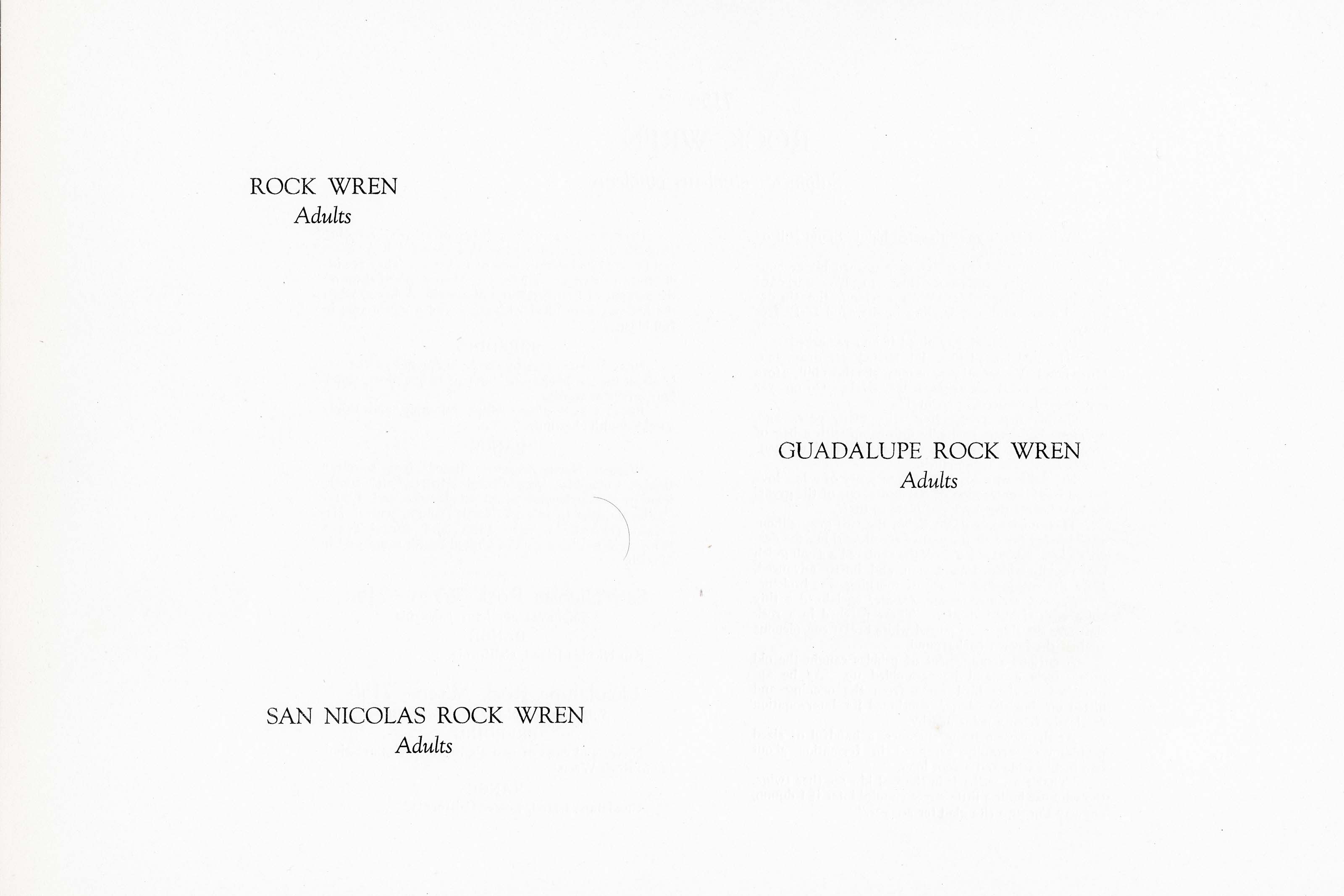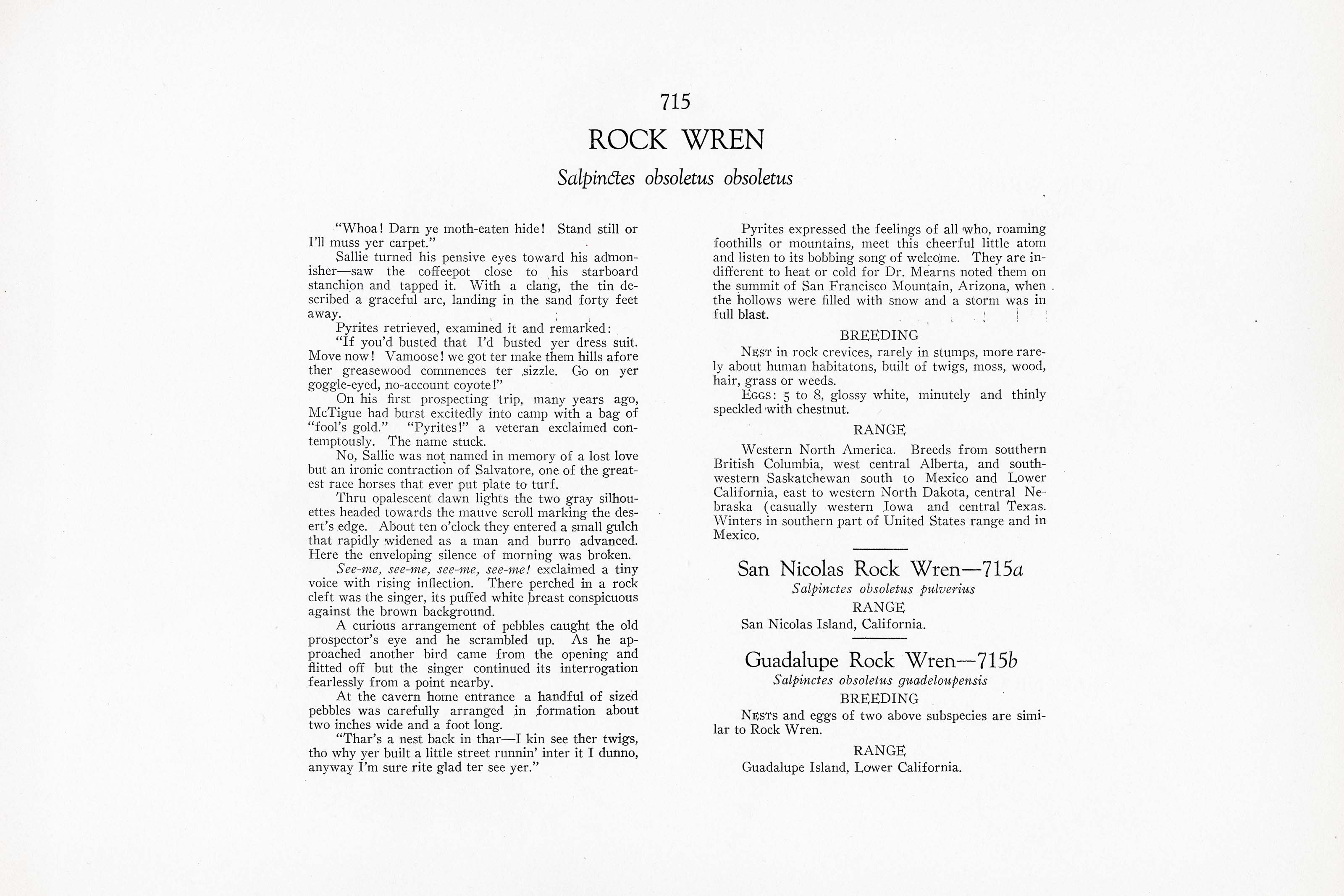






1912
1929
12
715-715a-715b
A team of dedicated board members, volunteers, and student interns has published every page in Volume 9. This volume includes 360 images of paintings and lyrical descriptions of birds, now available online for everyone to enjoy anywhere in the world. This is a monumental task. Each volume requires approximately 400 hours to photograph, edit, transcribe, catalog, and publish online. We need your support to complete this work.
If you're tech-savvy, have a good eye, are meticulous with details, and love structured data, please consider volunteering by emailing us at hello@rexbrasher.org.
We encourage all bird lovers and supporters to consider a monetary donation to support our mission to make Rex's work available for everyone. You can provide a one-time or recurring donation online.
"Whoa! Darn ye moth-eaten hide! Stand still or I'll muss yer carpet."
Sallie turned his pensive eyes toward his admonisher — saw the coffeepot close to his starboard stanchion and tapped it. With a clang, the tin described a graceful arc, landing in the sand forty feet away.
Pyrites retrieved, examined it and remarked:
"If you'd busted that I'd busted yer dress suit. Move now! Vamoose! we got ter make them hills afore ther greasewood commences ter sizzle. Go on yer goggle-eyed, no-account coyote!"
On his first prospecting trip, many years ago, McTigue had burst excitedly into camp with a bag of "fool's gold." "Pyrites!" a veteran exclaimed contemptously. The name stuck.
No, Sallie was not named in memory of a lost love but an ironic contraction of Salvatore, one of the greatest race horses that ever put plate to turf.
Thru opalescent dawn lights the two gray silhouettes headed towards the mauve scroll marking the desert's edge. About ten o'clock they entered a small gulch that rapidly widened as a man and burro advanced. Here the enveloping silence of morning was broken.
See-me, see-me, see-me, see-me! exclaimed a tiny voice with rising inflection. There perched in a rock cleft was the singer, its puffed white breast conspicuous against the brown background.
A curious arrangement of pebbles caught the old prospector's eye and he scrambled up. As he approached another bird came from the opening and flitted off but the singer continued its interrogation fearlessly from a point nearby.
At the cavern home entrance a handful of sized pebbles was carefully arranged in formation about two inches wide and a foot long.
"Thar's a nest back in thar — I kin see ther twigs, tho why yer built a little street runnin' inter it I dunno, anyway I'm sure rite glad ter see yer."
Pyrites expressed the feelings of all who, roaming foothills or mountains, meet this cheerful little atom and listen to its bobbing song of welcome. They are indifferent to heat or cold for Dr. Mearns noted them on the summit of San Francisco Mountain, Arizona, when the hollows were filled with snow and a storm was in full blast.
NEST: in rock crevices, rarely in stumps, more rarely about human habitations, built of twigs, moss, wood, hair, grass or weeds.
EGGS: 5 to 8, glossy white, minutely and thinly speckled with chestnut.
Western North America. Breeds from southern British Columbia, west central Alberta, and southwestern Saskatchewan south to Mexico and Lower California, east to western North Dakota, central Nebraska (casually western Iowa and central Texas. Winters in southern part of United States range and in Mexico.
San Nicolas Island, California.
NESTS and eggs of two above subspecies are similar to Rock Wren.
Guadalupe Island, Lower California.